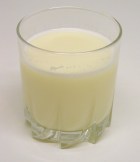The Omega 3, 6 and 9 groups of fatty acids all contain essential fatty acids necessary for good health. The difference between them lies in the position of the first double bond from the methyl end or the Omega end of the carbon chain. As its name implies, the Omega 3 fatty acids have their first double bond at the 3rd position from the end of the chain, and likewise with the other two. Omega 6 has its first double bond at the 6th position from the end and Omega 9 has it at the 9th position from the end of the chain.
The following table represents the main fatty acids found in Omega 3, 6 and 9
Main components of Omega 3, 6, 9 |
Omega 3 | Omega 6 | Omega 9 |
alpha-linolenic acid ALA | Linolenic acid LA | Oleic acid OA |
eicosapentaenoic acid EPA | Gamma-linolenic acid GLA | |
docosahexaenoic acid DHA | Dihomogamma linolenic acid DLA | |
| Arachidonic acid AA | |
Omega 3
The most important 2 fatty acids in the Omega 3 family are EPA and DHA as these are in limited supply and only found in any real quantities in oily fish and fish oil supplements. Although DHA is important for pregnant and nursing mothers and for young children for healthy development of the brain and vision, EPA can be considered the most important for everyone else as it is necessary for the efficient functioning of the brain and the body at a cellular level.
The Omega 3's have anti-inflammatory and anti-coagulant properties as well as many other important health benefits. They reduce inflammation and can provide protection against cardiovascular disease, arthritis, skin conditions, depression and other mood-related disorders.
Omega 6
Although Omega 6 is generally classed as pro-inflammatory, paradoxically, GLA, when sourced dietetically, has anti-inflammatory properties. It can help the bloating and pain associated with PMS. It also maintains healthy skin, hair and nails and generally helps to bring about hormonal and emotional balance.
Omega 3 and Omega 6 interact with each other so the balance between them is crucial for good health. Together they affect the production of hormonal type messengers called eicosanoids, which has an impact on inflammation in the body and all functions at a cellular level.
Omega 9
Omega 9 also has many preventative qualities as its main component, Oleic acid, helps to reduce the risk of arteriosclerosis, cardiovascular disease and stroke. Borage oil contains both Omega 6 and Omega 9 in the form of Gamma-linolenic acid and Oleic acid and is in fact, one of the best sources of GLA.
Pure EPA therefore contains a blend of all 3 of the important fatty acids EPA, GLA and OA making it an excellent choice of omega 3 6 9 supplement.
Benefits of Omega 3 6 9
Omega fatty acids are polyunsaturated fats. They are healthier than saturated fats and have many metabolic functions. There are many benefits of omega 3 6 9 supplementation.
Omega 3 and omega 6 fatty acids are essential fatty acids (EFA’s). Our bodies cannot manufacture them, and we must consume them in our diets. Omega 9 fatty acids are not essential. Our bodies need omega 9 fats, but we can manufacture them from other sources.
Omega 3 fatty acids prevent heart disease and the complications of heart attack. People who take omega 3 fatty acids have a lower mortality rate after heart attack than those who do not.
Omega 3 EFA’s improve cardiac risk factors, and help prevent CHD. They normalize lipid levels, lower blood pressure and improve glucose metabolism.
Omega 3’s may be helpful in a number of other conditions, to. Rheumatoid arthritis, depression, autism, and many other conditions may be improved by taking omega 3 EFA’s. They are necessary for growth and development, especially in the development of nervous tissue, and may improve cognitive function and emotional health.
Omega 6 fatty acids compete for enzymes with omega 3 EFA’s, so the amounts of the two need to be properly balanced. Less research has been done on omega 6 EFA’s than on omega 3’s. Most omega 6 fatty acids produce an inflammatory response that may be necessary for healthy immune system function. Research is beginning to indicate that one omega 6 EFA is, however, a powerful anti-inflammatory agent, and may be even more important for healthy hearts than omega 3 oils.
Omega 9, as mentioned, is not an essential fatty acid. Omega 9 oils are monounsaturated, and are found in olive oil. Olive oil is known to have beneficial health effects, and omega 9 oils may be necessary for healthy immune system functioning.
The benefits of omega 3 6 9 include all of the benefits of all three types of fatty acid. The amounts and ratios of each fatty acid are balanced to optimal levels of each. Taking an omega 3 6 9 supplement is a good way to ensure that you are getting essential nutrients for your good health. Pure EPA is a fantastic balance of omega 3 6 9 !
 Soy milk is made by soaking soybeans, grinding them with water. The fluid which results after straining is called soy milk. You can make soy milk at home with basic kitchen tools or with a soy milk machine. Soy milk is most commonly found in aseptic cartons. Most of the soy milk available in the market is flavoured and fortified with extra calcium or vitamins. The most popular flavours are vanilla and chocolate. Some producers add thickeners to their soy milk to give it a mouth feel of cow's milk. Traditionally, soy milk has a beany taste which is well accepted by the Chinese, but less by the Western palate. By using correct processing techniques, this beany taste can be reduced or eliminated. Recently, with the recognition of its health benefits and with its improved flavor and texture, soy milk has now a high and rising acceptance. Sometimes, use is made of protein isolates from soy bean which are mixed with water, oils, sugars, stabilisers to give it a milky appearance. This type of product should be described as soy drink and is not as wholesome as real soy milk.
Soy milk is made by soaking soybeans, grinding them with water. The fluid which results after straining is called soy milk. You can make soy milk at home with basic kitchen tools or with a soy milk machine. Soy milk is most commonly found in aseptic cartons. Most of the soy milk available in the market is flavoured and fortified with extra calcium or vitamins. The most popular flavours are vanilla and chocolate. Some producers add thickeners to their soy milk to give it a mouth feel of cow's milk. Traditionally, soy milk has a beany taste which is well accepted by the Chinese, but less by the Western palate. By using correct processing techniques, this beany taste can be reduced or eliminated. Recently, with the recognition of its health benefits and with its improved flavor and texture, soy milk has now a high and rising acceptance. Sometimes, use is made of protein isolates from soy bean which are mixed with water, oils, sugars, stabilisers to give it a milky appearance. This type of product should be described as soy drink and is not as wholesome as real soy milk.

 Soy protein isolate is the soy protein with the highest content of protein. It is made from defatted soy meal by removing most of the fats and carbohydrates, yielding a product with 90 percent protein. Therefore, soy protein isolate has a very neutral flavour compared to other soy products. Because most of the carbohydrates are removed, the intake of soy protein isolate does not cause flatulence. Pure soy protein isolate is difficult to find in stores and is mainly used by the food industry and less by consumers. Maybe you can find it in health stores or in the pharmacy section of the supermarket. It is mainly found combined with other food ingredients; for example, soy protein shake powder is a mixture of soy protein isolate with flavours, minerals and vitamins.
Soy protein isolate is the soy protein with the highest content of protein. It is made from defatted soy meal by removing most of the fats and carbohydrates, yielding a product with 90 percent protein. Therefore, soy protein isolate has a very neutral flavour compared to other soy products. Because most of the carbohydrates are removed, the intake of soy protein isolate does not cause flatulence. Pure soy protein isolate is difficult to find in stores and is mainly used by the food industry and less by consumers. Maybe you can find it in health stores or in the pharmacy section of the supermarket. It is mainly found combined with other food ingredients; for example, soy protein shake powder is a mixture of soy protein isolate with flavours, minerals and vitamins. Soy protein has been used since 1959 as ingredients for its functional properties in a variety of foods such as salad dressings, soups, vegetarian foods and meat imitations. Its functional properties are emulsification and texturizing. Recently the popularity of soy protein is increasing, mainly because of its health benefits. It has been proven that soy protein can help to prevent heart problems and many countries allow health claims for food, which are rich in soy protein.
Soy protein has been used since 1959 as ingredients for its functional properties in a variety of foods such as salad dressings, soups, vegetarian foods and meat imitations. Its functional properties are emulsification and texturizing. Recently the popularity of soy protein is increasing, mainly because of its health benefits. It has been proven that soy protein can help to prevent heart problems and many countries allow health claims for food, which are rich in soy protein.